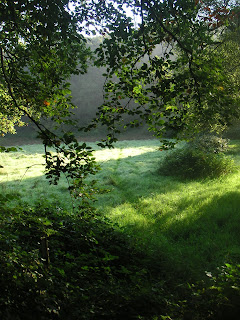Being outside. Those words have defined my life for good and ill. They
reflect my preference for place over people and the resulting separateness. As
a child it was a physical longing, more than that, a necessity to be out of
doors, away from the cage that family life often formed. The sense of
liberation and free choice is intimately connected for me with open space, with
air and sky. I have come to see my definition and sense of identity in a
connection with landscape. Place before people, expansion before confinement. I
don’t function well within physical limits.
Looking back, my life is speckled with moments of profound
identification with my environment, and the course of my own career and
development has been an irresistible, if wavy, line drawing me along the
pathway of freedom and belonging. The journey began in Gloucestershire, found
meaning in leaving that manicured terrain far behind, was inspired by the
Brecon Beacons, and matured in the south Wales of my parental
roots. It floundered in the relentless urbanity of London and revived in the
relenting rurality of Somerset. There I began
to understand the nature of spiritual pilgrimage and the value of landscape in
life. My wayfaring has been equally fired by the Tatra mountains of southern Poland and the misty
sweep of Exmoor,before being finally fixed in the
granite of Brittany, where the
moment of arrival was an awakening.
Here's to being outside in 2017...

































